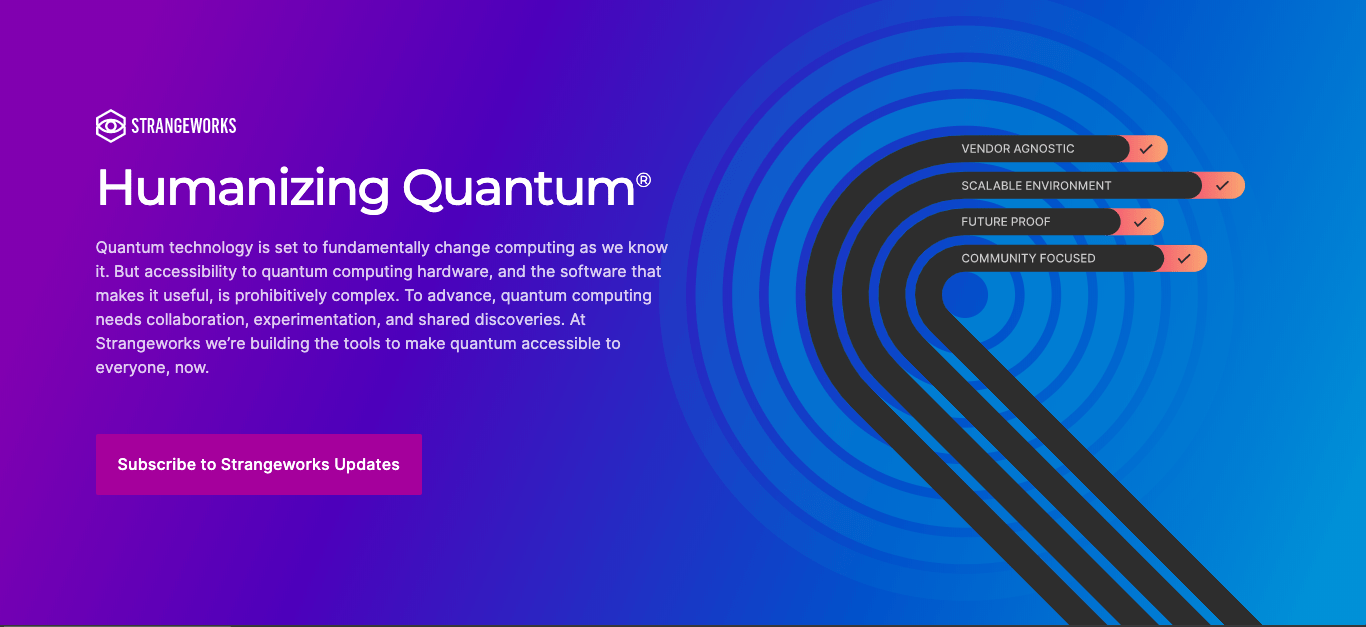Strangeworks (we love that name) is one of the growing companies focused on providing quantum solutions. Founded by Whurley (William Hurley), Strangeworks is quantum company that likes to take a different approach – especially to it’s interface and user experience. Strangeworks also made our Quantum Company of the day a few weeks ago. The Austin Texas based company’s founder was also responsible for a best selling book titled “Quantum Computing for Babies”, helping to educate the world about Quantum Computing. We got a look at the early Beta release.
The mantra behind Strangeworks is to have one platform and interface but run on a variety of quantum hardware. Hardware providers from D-wave, Rigetti, Google, IBM are all supported.
As the technology world is focused on making everything run on the cloud, so is Strangeworks. Currently the Quantum Hardware providers require separate accounts (IBM, D-wave), meaning if you invest in one platform porting over to another is tougher. Strangeworks aims to be that hardware-agnostic middle-ware that allows users to focus on solving the problems rather than focusing on a specific hardware solution building the tooling that a team needs to work collaboratively on Quantum algorithms. Even if the hardware is not there such as in the case of Microsoft you can still simulate in the Q# language for example.

Strangeworks Quantum Computing Dashboard
It all happens from the Strangeworks Community Platform dashboard. The concept is to have a one-stop shop for collaboration, publishing, discussion and assistance in that very same interface. As you can see from the screenshots, there has been a tremendous amount of effort invested in the user experience (UX) which is clean slick and neatly organised and we have to say, works well. We tried to crash and break the dashboard but failed – which has to be a great thing and were very impressed how seamless the whole experience way.
Direct Link to Stack Overflow
Stackoverflow is the go-to place for technical help. Whether these be programming issues, maths issues and now Quantum Computing issues. Strangeworks sponsors the platform and has direct access from its desktop into the stackoverflow platform as well as integrating the top questions from quantumcomputing.stackoverflow.com into the desktop.

Quantum Computing News Direct
The platform also aims to integrate the latest QC news and Research developments meaning that the dashboard can be the go-to place for understanding developments.
Collaboration made easy
Many scientists use science note-books (typically Jupyter) in order to share and collaborate. However there are very few online services that make sharing and collaborating easy even with these notebooks. If quantum researchers want to share results, then tooling from Strangeworks makes collaboration super easy – all from the same dashboard.
Multiple Languages and Frameworks
As you’d expect from being language agnostic there are multiple frameworks and languages supported. There are project examples provided in OpenQASM, Qiskit, cirq, ProjectQ, Forest, Leap but there is also support for Q#.
Run directly on different Hardware
The point of all these clear interfaces is to make it easy for developers to run code without having to worry where the Hardware actually is or even what it is. Of course the problem that is being solved will likely cement or restrict the Hardware used. For example, if an optimization problem then D-wave architecture might be appropriate. But the ethos is to ensure that the development pathway is similar.
Circuit Diagrams
The dashboard has plotting facilities for both the circuits generated from code and also the sampling. The universality of the interface means that you can go easily from code to circuit to result/output, no matter which framework you choose.

What do we think?
We love the look and feel of the dashboard with all of its integrated functionality, beautifully and timeless simple graphics. Additionally the intuitive interface means you can focus on the problems rather then trying to make “stuff” work. The dashboard makes collaboration super easy and even publishing code is effortless too.
The ready-to-run examples which include code examples such as Grovers, Rubiks code or Quantum walk mean that users who want to play in the sand-pit can do right out of the box. The intuitive interface will be welcomed by novices and experienced quantum researchers alike.
Anything that makes the process of creating quantum algorithms and developing is a welcome addition to the quantum technology landscape. Amazon have launched their own cloud service for Quantum Computing named Braket which also aims to standardize the way of interfacing quantum hardware, but may not offer quite the user friendliness of the Strangeworks platform.
If you want to try it out. You can sign up for a Beta account here.

